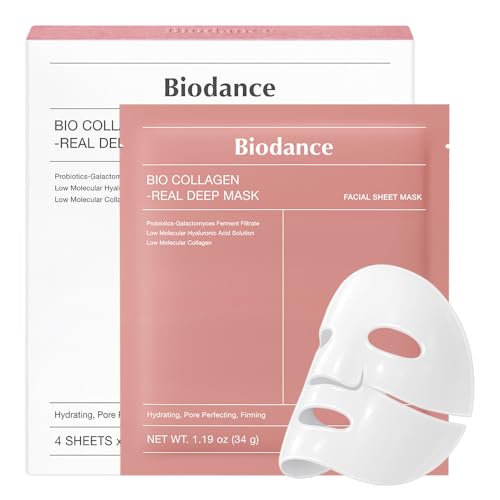Thinking of giving your outdoor space a fresh look? Painting pavers might just be the answer. Transforming your patio or walkway with a pop of color can instantly elevate the aesthetic appeal of your home. But can you really paint pavers? We’re here to guide you through the process and unleash your creativity in a fun and budget-friendly way.

Whether you’re looking to add a touch of personality to your garden path or revamp your backyard oasis, painting pavers can be a simple yet effective DIY project. From choosing the right paint to prepping the surface, we’ll share expert tips and tricks to ensure your painted pavers stand the test of time. Get ready to roll up your sleeves and unleash your inner artist as we explore the world of paver painting together.
Assessing the Suitability of Painting Pavers
When it comes to painting pavers, as landscape designers, we understand the importance of assessing the suitability of the pavers before proceeding with the painting process. By evaluating various factors, we ensure a successful and long-lasting paint job that enhances the overall aesthetic of outdoor spaces.
Types of Pavers and Their Compatibility With Paint
Before diving into painting your pavers, it’s crucial to consider the type of pavers you have and their compatibility with paint. Certain paver materials such as concrete, clay, or brick may respond differently to paint application. Concrete pavers are generally more receptive to paint and offer a smooth surface for painting, while clay or brick pavers might require additional preparation to ensure paint adhesion.
Evaluating Existing Paver Condition
Assessing the current condition of your pavers is another essential step in determining whether they are suitable for painting. We recommend examining the paver surface for any signs of damage, such as cracks, chips, or uneven areas. It’s important to address any issues before painting to achieve a uniform and visually appealing finish. Additionally, check for any existing sealants or coatings on the pavers, as these may impact the adherence of the paint.
By carefully considering the type of pavers you have and their condition, you can make an informed decision on whether painting them is a suitable option. This thoughtful assessment ensures that your painted pavers not only look beautiful but also stand the test of time in your outdoor space.
Choosing the Right Paint for Pavers
Types of Paint Suitable for Pavers
When it comes to painting pavers, selecting the appropriate paint plays a crucial role in achieving a successful and durable finish. For outdoor pavers, we recommend using acrylic-based paints specifically designed for exterior surfaces. These paints are formulated to withstand varying weather conditions, offering excellent adhesion and UV protection. By opting for acrylic-based paint, you ensure that your painted pavers maintain their color vibrancy and resist fading over time. Additionally, look for paints labeled as suitable for concrete, clay, or brick surfaces to guarantee compatibility and long-lasting results.
The Importance of Primer in Paver Painting
Priming the pavers before painting is a key step that should not be overlooked. A high-quality primer creates a solid base for the paint to adhere to, promoting better durability and a smoother finish. Before applying the primer, ensure that the pavers are clean, dry, and free of any existing coatings or sealants. The primer not only enhances the paint’s adhesion but also helps in achieving a more uniform appearance by sealing the surface and preventing uneven absorption of the paint. Invest in a suitable primer designed for exterior applications to enhance the longevity and overall quality of your painted pavers.
Step-by-Step Guide to Painting Pavers
Cleaning and Preparing the Pavers
When painting pavers, the first crucial step is ensuring that the surface is clean and free of any debris. We recommend thoroughly washing the pavers with a mild detergent and water to remove dirt, grime, and any existing paint residues. It’s essential to let the pavers dry completely before proceeding to the next step to ensure proper adhesion of the primer and paint.
Once the pavers are clean and dry, we suggest inspecting them for any cracks, chips, or other damages. It’s important to repair any imperfections using suitable paver repair products and allowing them to set according to the manufacturer’s instructions. This step is vital to ensure a smooth and uniform finish on the painted pavers.
Applying Primer and Paint
After preparing the pavers, the next step is applying a high-quality primer designed for exterior surfaces. The primer helps the paint adhere better to the pavers, improves durability, and ensures a more even color application. We recommend using a brush or roller to apply the primer evenly, following the manufacturer’s guidelines for drying time between coats.
Once the primer is dry, it’s time to apply the acrylic-based paint specifically formulated for exterior surfaces. This type of paint offers excellent durability and UV protection, making it ideal for outdoor pavers. We suggest applying the paint in thin, even coats to achieve a uniform finish, allowing each layer to dry completely before adding another coat.
Necessary Drying Time and Conditions
After painting the pavers, it’s crucial to allow sufficient drying time before exposing them to foot traffic or harsh weather conditions. We advise following the paint manufacturer’s recommendations for drying time, which typically ranges from a few hours to a day or more, depending on the paint type and weather conditions.
To ensure the painted pavers cure properly, we recommend avoiding heavy rain, extreme heat, or cold temperatures during the drying process. It’s best to plan the painting project when the weather forecast allows for optimal drying conditions. Once the paint has dried completely, the pavers will be ready to enhance your outdoor space with a fresh, colorful look.
Maintenance Tips for Painted Pavers
Regular Cleaning Practices
As landscape designers, we understand the importance of maintaining the beauty of your outdoor spaces. When it comes to painted pavers, regular cleaning is key to preserving their appearance. We recommend a simple cleaning routine to keep your painted pavers looking fresh and vibrant.
Here’s what we suggest:
- Sweep the painted pavers regularly to remove dirt, leaves, and debris that can dull their color over time.
- Use a mild detergent mixed with water to scrub the pavers gently, avoiding harsh chemicals that may damage the paint.
By incorporating these easy cleaning practices into your regular outdoor maintenance routine, you can ensure that your painted pavers stay attractive and appealing for years to come.
Touch-Up Strategies and Longevity
In our experience, even well-maintained painted pavers may require touch-ups over time to maintain their visual appeal. Here are some strategies we recommend for touching up painted pavers and ensuring their longevity:
- Inspect the painted surface periodically for any signs of wear and tear, such as chipping or fading.
- Prepare the affected area by cleaning it thoroughly and allowing it to dry completely before applying touch-up paint.
- Use the same high-quality primer and acrylic-based paint originally used for the pavers to ensure a seamless repair.
By addressing any minor imperfections promptly and following these touch-up strategies, you can extend the lifespan of your painted pavers and keep them looking pristine in your outdoor space.
« Discover the Ultimate Secrets to Fire Pit-Proof Your Pavers – You Won’t Believe How Easy It Is Uncover the Ultimate Paver Sellers Revealed: Home Depot vs. Online Stores »
Pros and Cons of Painting Pavers
Advantages of Painting Pavers
When it comes to enhancing outdoor spaces, painting pavers offers a range of benefits. First and foremost, painting pavers provides a quick and cost-effective way to transform the look of your outdoor area. With a wide variety of colors and finishes available, painting pavers allows for customization to match your aesthetic preferences. Additionally, painting can help unify the overall design scheme of your outdoor space by creating a cohesive look.
Another advantage of painting pavers is the ability to address imperfections and discoloration. By applying a fresh coat of paint, you can cover up stains, cracks, or faded colors, giving your pavers a refreshed appearance. This can be particularly useful if you have older or worn-out pavers that could benefit from a facelift.
Furthermore, painting pavers can provide a protective barrier against elements such as moisture, UV rays, and stains. A quality paint job can help extend the lifespan of your pavers by preventing damage and deterioration. This added layer of protection can contribute to the longevity of your outdoor pavement, saving you money in the long run on repairs or replacements.
Potential Drawbacks and Considerations
While painting pavers can offer many advantages, there are also some considerations to keep in mind before taking on this project. One potential drawback of painting pavers is the maintenance required to upkeep the painted surface. Over time, painted pavers may experience chipping, peeling, or fading, necessitating regular touch-ups to maintain their appearance.
Another consideration is the durability of the paint job. Depending on factors such as foot traffic, weather conditions, and the quality of paint used, painted pavers may show signs of wear sooner than expected. It’s essential to choose high-quality paint specifically designed for outdoor use and consider reapplying the paint periodically to keep your pavers looking their best.
Additionally, some individuals prefer the natural look of unpainted pavers and may find that painting alters the texture or characteristics of the surface. If you appreciate the raw beauty of natural stone or brick pavers, painting them may not align with your design preferences.
Considering these factors can help you make an informed decision about whether painting your pavers is the right choice for your outdoor space. By weighing the pros and cons, you can determine if painting pavers aligns with your aesthetic goals and maintenance preferences.
Real-Life Examples of Painted Paver Projects
Before and After Comparisons
When considering painting pavers to revamp outdoor spaces, it’s essential to visualize the potential transformation. We’ve witnessed numerous before-and-after scenarios where painting pavers breathed new life into dull or outdated areas. For instance, a client had worn-out concrete pavers in their backyard, detracting from the overall appeal of the space. By opting to paint the pavers in a warm terracotta hue, we were able to create a vibrant outdoor patio that complemented the surrounding greenery. The transformation was remarkable, showcasing the power of a well-executed paint job in rejuvenating outdoor areas.
Homeowner and Professional Feedback
Feedback from both homeowners and professionals sheds light on the impact of painted paver projects. Many homeowners express satisfaction with the visual upgrade that painted pavers bring to their outdoor settings. They appreciate the ability to customize the color scheme to match their style preferences, creating a cohesive look in their landscapes. Additionally, professionals in the landscaping industry emphasize the versatility that painted pavers offer in design projects. By incorporating painted pavers, they can achieve unique patterns and color combinations that elevate the overall aesthetic of outdoor spaces. Overall, the feedback underscores the positive outcomes and creative possibilities that painted paver projects bring to residential and commercial landscapes.
Conclusion
Painting pavers can truly transform outdoor spaces with a touch of creativity and color. We’ve explored the simplicity and cost-effectiveness of this DIY project, along with essential tips for selecting the right paint and preparing the pavers. By following the step-by-step guide provided, you can achieve a durable and appealing finish that breathes new life into your outdoor areas. The real-life examples shared demonstrate the power of painted pavers in enhancing curb appeal and personalizing outdoor environments. Whether you’re looking to refresh your patio, walkway, or driveway, painting pavers offers a versatile solution to express your unique style. Consider the feedback from homeowners and professionals to decide if painting pavers aligns with your aesthetic vision and maintenance preferences for a vibrant outdoor space.











